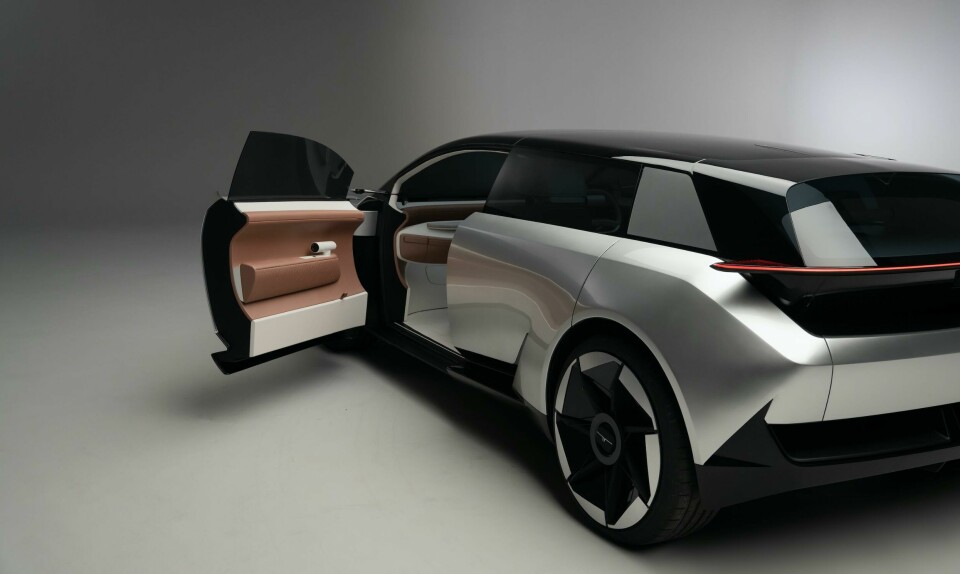
Interior Motives: Tata Avinya
Taking its cues from catamaran design with a dollop of modernism, the Tata Avinya marks a sea-change for the Indian brand
There are concept cars that are one stage removed from production, a kind of dress rehearsal for the opening night. Then there are the concepts that, in one grand gesture, seek to reinvent the brand. The Tata Avinya, unveiled in April 2022 at a special event in India, falls unreservedly into the latter. The Indian OEM, hitherto known for its useful range of SUVs and crossovers aimed at the domestic market, has, at the behest of management, ripped up the rule book with this EV concept. The Avinya is based on a new GEN 3 platform and signals the brand’s first real stab at the global premium market. The speed at which the design team moved – from start to finish in nine months – belied the ambitions of the project.
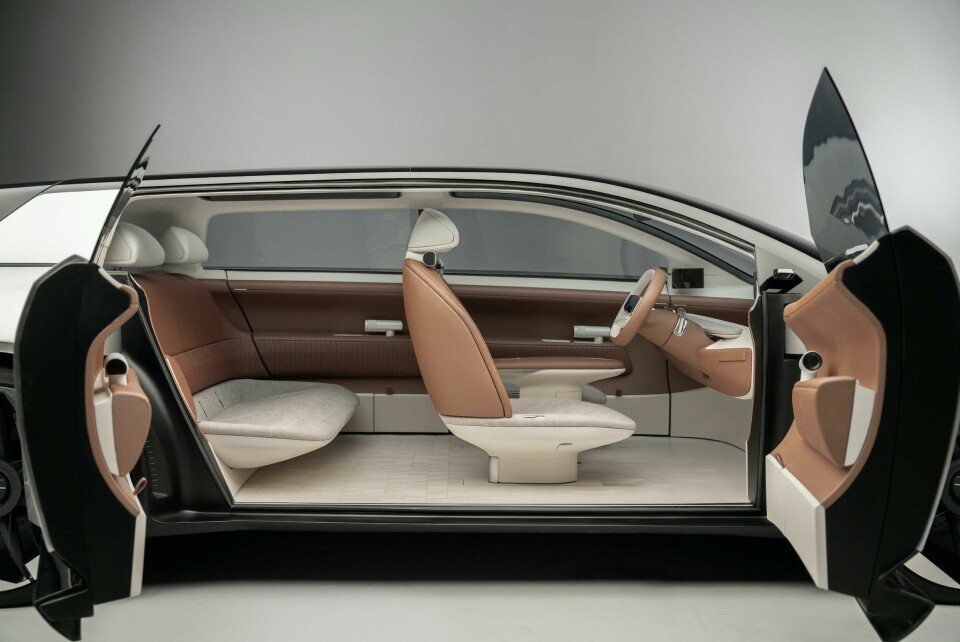
“It was quite a straightforward brief,” recalls Martin Uhlarik, VP of global design at Tata. “It should be an expression of our company values: improving quality of life, having a higher calling, focusing on human-centric design… but it had to be a global product.” Armed with what was effectively a blank sheet of paper, save for a requirement that it should be 4.3 metres long (the sweet spot for the Indian market), Uhlarik’s team set to work.
The nautical metaphor continues with a sail-like form on the C-pillar
Space and light were a primary focus – Uhlarik is a fan of California modernism. “We wanted you to feel like you were washed in light as if you were outside,” he says. “So very thin structures and a lot of glazing.” Though the modernist preoccupation with transparency served well as a design principle, it was the catamaran which provided the right combination of form and dynamism.
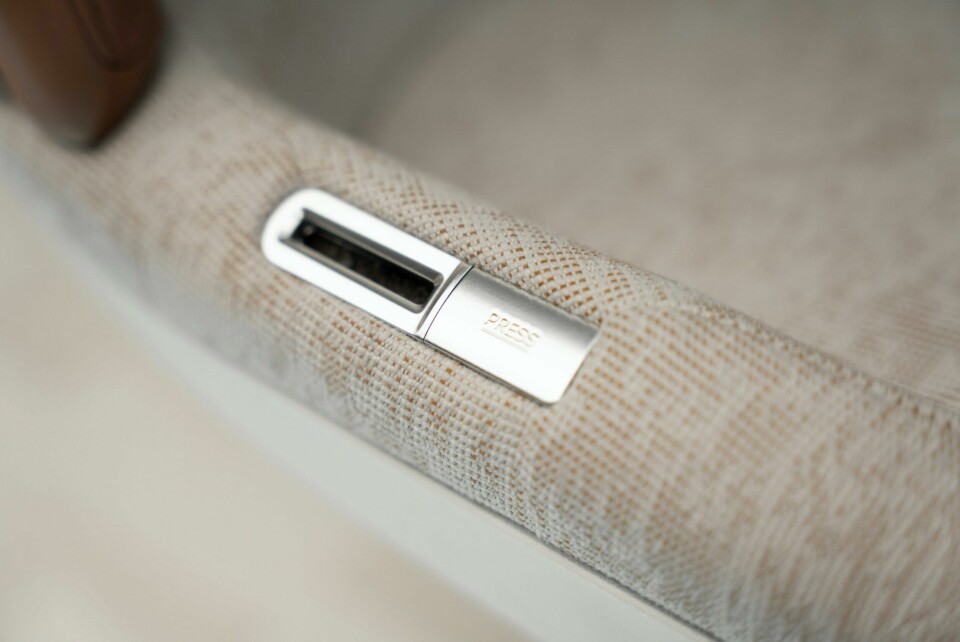
Nautical inspiration
“Catamarans have this long and low profile with volumes that disappear beneath the surface of the water. Then you have this strong graphical break up of the mass. So we have this huge glass house and then different levels of transparency that blend into one another.” That blend is evident in the unusually short hood, which appears as a pebble of polished obsidian that blends into the windshield and across the roof to the rear of the vehicle to create a seamless, transparent form, save for a extended glass spoiler that “acts as a cut-off for air at the back of the car.” The daytime running lights at front and rear form a T-for-Tata, “a strong architectural form,” says Uhlarik and representative of an endless horizon.
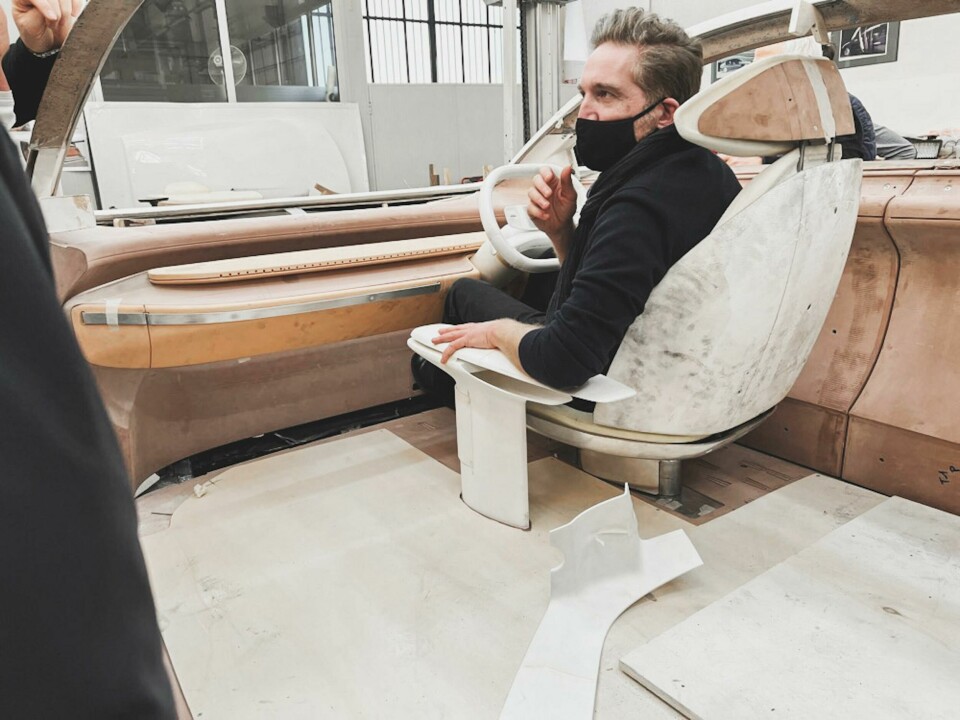
The wheels are pushed to the extremities of the body, making Avinya’s overall footprint appear larger than it is. On approach, you notice how clean the flanks are, which underscores the long and slender feel, broken up by a diagonal, black graphic that creates an air curtain. The nautical metaphor continues with a sail-like form on the C-pillar while the relatively high beltline ensures the form does not drift into MPV territory. The exterior is all very clean, with little theatrics, and intended to maximise the internal space.
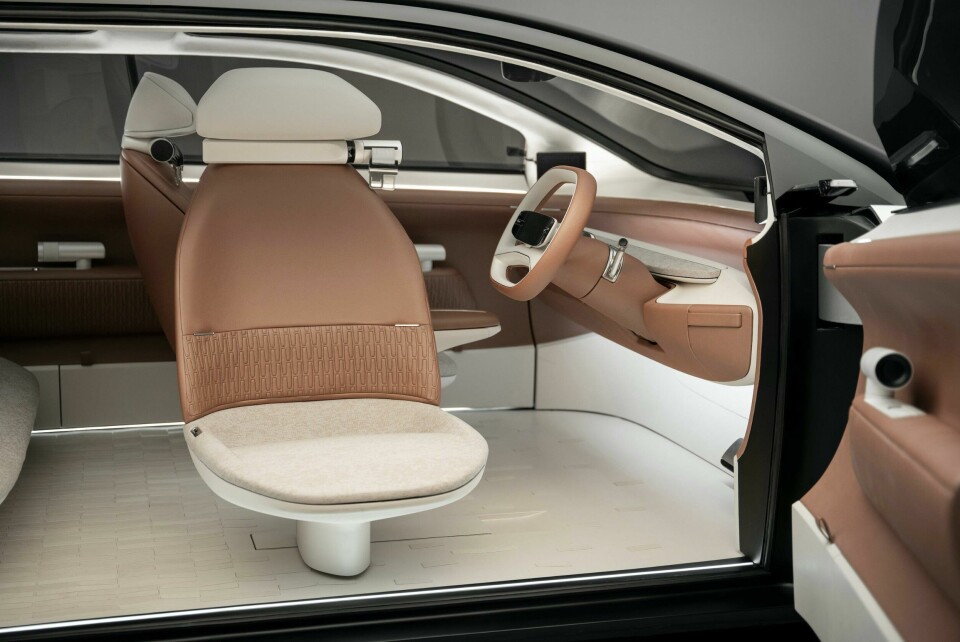
The butterfly doors create a welcoming effect and dispense with the need for a B-pillar, allowing for more glazing. These open to reveal a bright, minimalist interior tempered by the two-tone oyster shell and terracotta colour scheme that could fool you into thinking this is an extremely well-made clay model. It is undeniably a dramatic and unexpected shift, but far from overwhelming.
The terracotta references the Aga Khan’s palace at Pune, which the team visited in search of a way to draw on local culture without slipping into cliche. “We wanted to come up with something that is not a pastiche, but at the same time clearly identifiable as warm and giving a feeling of quality,” says Uhlarik.
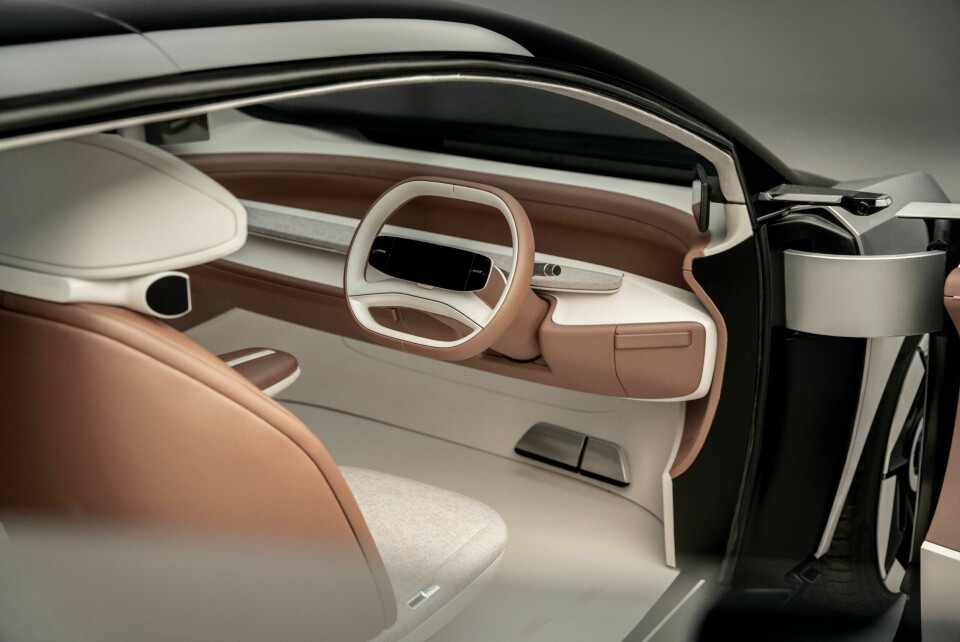
Islands of technology
The designers have created clearly delineated strata-like sections defined by the muted colour scheme resulting in a feeling of lightness and flow throughout the space. The onus is on giving the passengers breathing room by reducing the amount of visual clutter. Technology, for example, is localised in little clusters rather than dominating proceedings. The light touch extends to furniture – the pedestal is centred in the middle of the seat to reduce the weight of its impact on the floor.
The main feature is notable by its absence: there is no gargantuan coast-to-coast screen
The same is true of the centre console, which Uhlarik describes as a “functional island” housing the main functions: start button, shifter and aroma diffuser (more on that later). Stretched to exaggerate the length of the overall interior, it resembles the fin keel of a yacht – another nautical reference. It also acts as a down light, gently illuminating the footwells. The floor, incidentally, is recycled polypropylene resin and appears as a tiled surface. Each passenger gets their own sound system in the headrest.
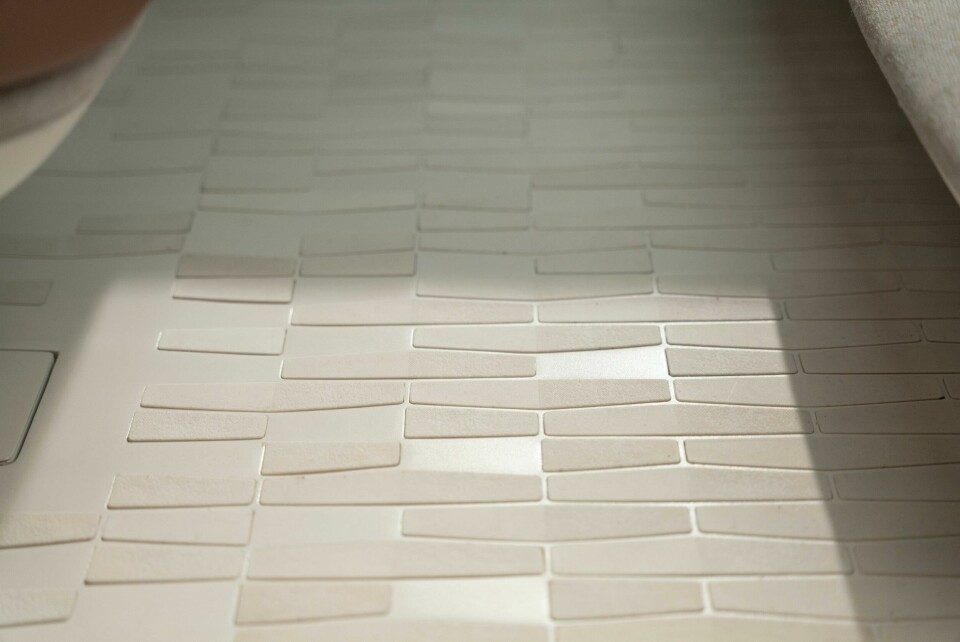
But the main feature is notable by its absence: there is no gargantuan coast-to-coast screen. There isn’t even a token tablet-sized effort. “The industry is obviously going through a trend at the moment and screens are getting bigger and bigger,” says Uhlarik. “But we believe there will be a reduction of screens over the next five years or so. We are trying not to chase the trends, we want to think about the best way to view the information.”
To that end, the user experience is centred around voice-activated commands and, following the Dieter Rams quote about good design being like an English butler, technology being there right when you need it. In practice, that means a diminutive screen fixed to the steering wheel and a navigation system that sits between the IP and the windshield and operates like a television news ticker, replacing bulletins with directional arrows and essential journey-related information.
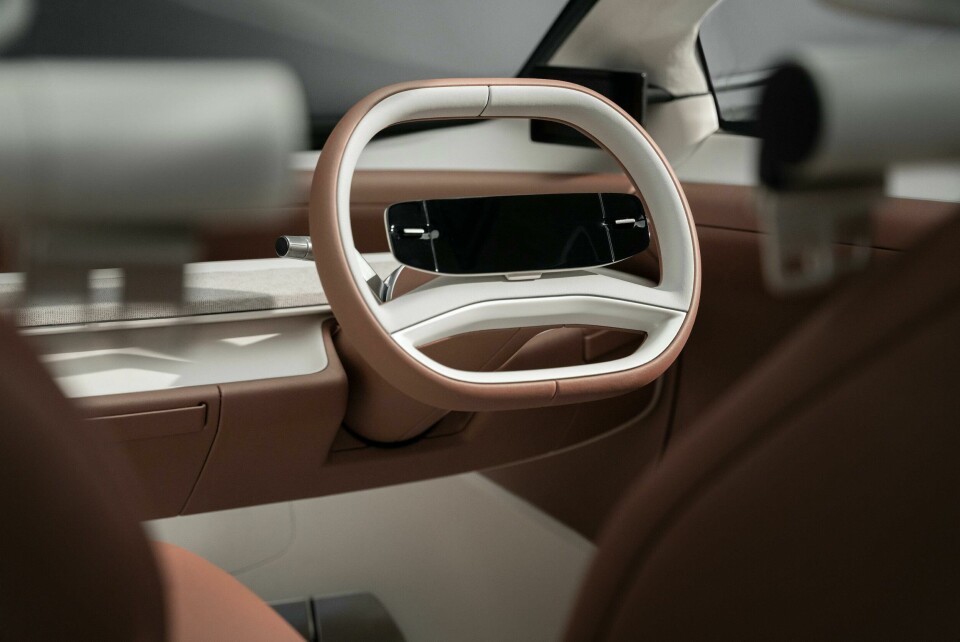
Aromatherapy
Though a global product, there are nods to the needs of the Avinya’s country of origin: a hairdryer-like HVAC attached to the doors that provides a directed, reviving blast of air to combat temperatures as high as 42 degrees Celsius. It is redolent of the air-conditioning systems you find on an aircraft. “The notion of private space in a car is not happening, but having control over your own little bubble – that’s luxury,” says Nicolas Fourny, lead interior designer at Tata. The hairdryers are augmented by an aroma diffuser in the central console that perfumes the cabin with what is described as a ‘forest’ scent. “We wanted to make it a multi-sensory experience which is more memorable.”
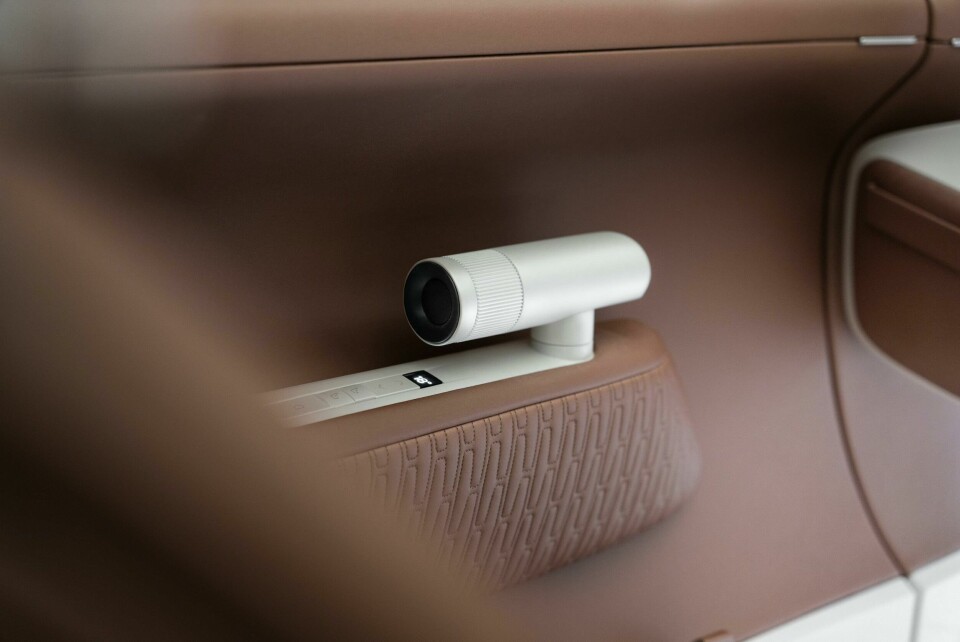
The Avinya is a remarkable achievement for Uhlarik’s team and there must be an element of vindication over his appointment as global vp of design back in April 2021. From their studio on the Warwick university campus, the design team has created a car that has upended the perception of the Indian brand, introducing it to a new global audience. The challenge for Uhlarik is to ensure the vision set out here translates into a viable production car.



